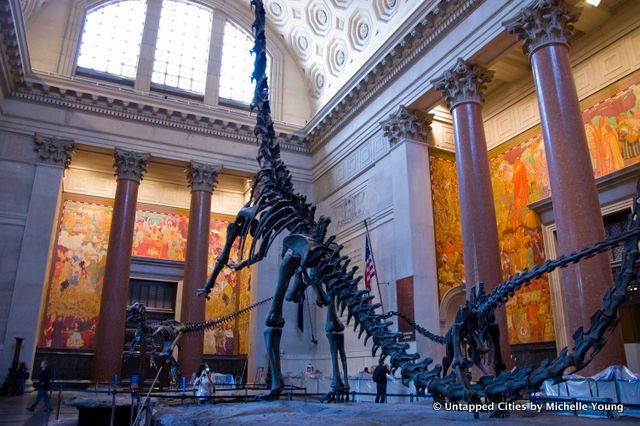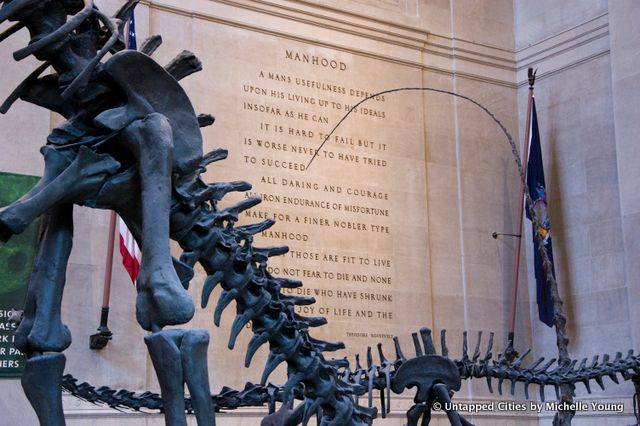Last-Minute NYC Holiday Gift Guide 🎁
We’ve created a holiday gift guide with presents for the intrepid New Yorker that should arrive just in time—


After a two year conservation process, the historic murals in the Theodore Roosevelt Rotunda of the American Museum of Natural History, are set to reopen to the public on October 27th, Roosevelt’s birthday. The three monumental murals were originally completed in April 1935 by William Andrew Mackay, and depict some of the most important events in Roosevelt’s public life. They hold the distinction of being some of the largest indoor murals in a New York City public building, as each one is 34 feet high and 62 feet long.
Over the years, the famed murals had not only collected dust and dirt, but had also begun to separate from the wall, and were in desperate need of repair. EverGreene Architectural Arts submitted a proposal to restore the murals, which was accepted by the Museum and the Conservation Advisory Group of the New York City Public Design Commission. The lead architect for the Theodore Roosevelt Memorial is Kevin Roche John Dinkeloo and Associates, the firm that has also been in charge of renovations of the Metropolitan Museum of Art since 1967.

What I want to highlight, however, is one of the little-known stories about these murals. Patricia O’Toole, Roosevelt’s biographer and consultant to the Museum, shared an interesting anecdote with me about one of the figures in the mural commemorating the Treaty of Portsmouth, which ended the Russo-Japanese War in 1905. Decades before WWII, the American government was already worried about Japan’s power in the Pacific, starting with the Japanese imperial ambitions over Korea and Manchuria. At the turn of the century, Russia wanted to establish naval bases in the Pacific, but when initial negotiations failed, Japan declared war on Russia. But with the turmoil of the Revolution, Tsar Nicholas II decided to negotiate peace in order to dedicate his attention to Russia’s internal struggles. At this time, Konstantin Nabokov–uncle of the great writer Vladimir, who was only a child at the time–was in the foreign service, and appears in the mural near Roosevelt.
In his memoir Speak, Memory, Vladimir Nabokov notes,
He is portrayed, goatee and all (together with Count Witte, the two Japanese delegates and a benevolent Theodore Roosevelt), in a mural of the signing of the Portsmouth Treaty on the left side of the main entrance hall of the American Museum of Natural History–an eminently fit place to find my surname in golden Slavic characters, as I did the first time I passed there–with a fellow lepidopterist, who said ‘Sure, sure’ in reply to my exclamation of recognition.
I hardly need to point out the irony in the fact that as the young Nabokov worked in the museum as a butterfly expert, his colleague dismissed his comment about his uncle. The unnamed colleague was lost to the annals of history, but Vladimir certainly was not, seemingly proving that the road to immortality is paved in ink. When the Theodore Roosevelt Rotunda reopens next month, curious visitors to the museum will be able to see Konstantin Nabokov themselves, along with Roosevelt, who was the first American to win the Nobel Peace Prize for his negotiation of the Treaty of Portsmouth.



Read about Wave Hill, a historic villa in the Bronx where Theodore Roosevelt spent a couple of summers when he was young.
Get in touch with the author @lauraitzkowitz
Subscribe to our newsletter